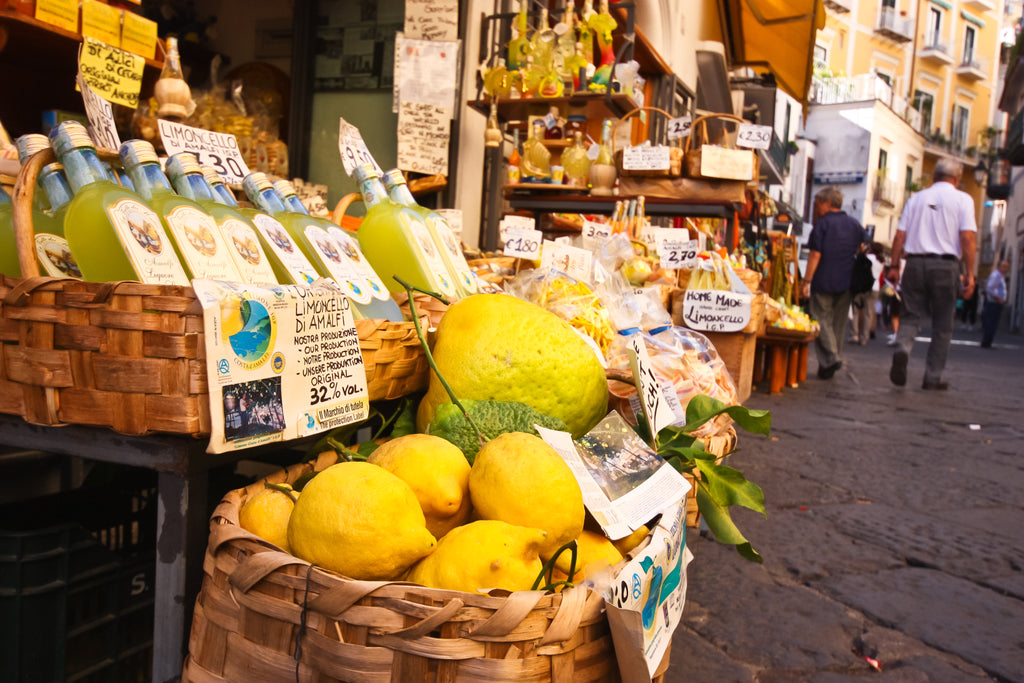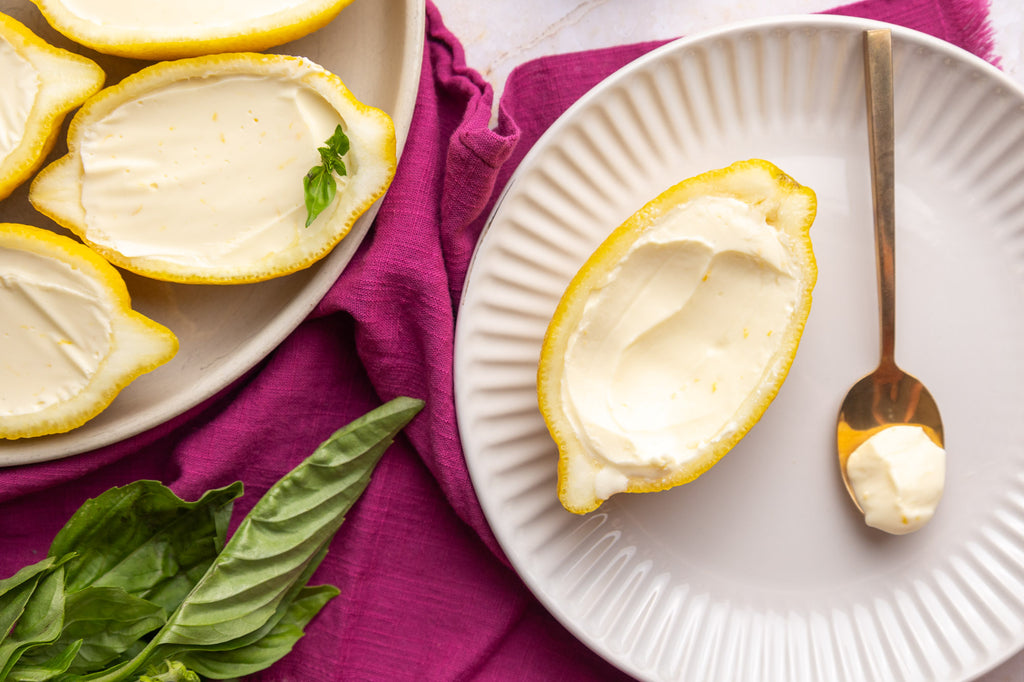Why the lemon liqueur is a delicious symbol of the Amalfi Coast.
A sweet, tart, lemon-based liqueur, limoncello is a favorite drink on the Amalfi Coast. That’s where it was born, thanks to the sheer wealth of lemons that grow in this coastal region south of Naples. Citrus from Capri, Amalfi, and Sorrento is beloved across Italy: uniquely sweet, fragrant lemons and oranges that grow in terraced orchards along steep cliffs overlooking the sea. The fruit thrives in the area’s warm sun and ocean breezes, and lemons adorn ceramics, table linens, and signs around the region—not to mention showing up in pastas, salads, desserts, and, yes, cocktails.
But while limoncello has become a symbol of this lemon-loving place, it’s not always clear just what it is—or what it isn’t. Here, we answer all the most common questions about limoncello:

What is limoncello?
Limoncello is a liqueur made by infusing lemon peels in an alcoholic base and adding a sugar syrup to sweeten it. Also known as a cordial, this type of spirit is often made at home as a way to use fresh fruit and preserve its flavor to be enjoyed long after its season is over.
When was limoncello invented?
As with many beloved Italian foods, nobody can say for sure how limoncello was invented. The most common story about its origin is that it was created in the early 1900s by a woman named Maria Antonia Farace, the owner of a small hotel in Capri. Her hotel’s garden was overflowing with lemons, and she decided to put them to use into a drink she could offer her guests all year round.

Can I buy limoncello in the U.S.?
Yes, but be sure to do your research first. Alcoholic drinks aren’t required to provide an ingredients list, so you’ll need to do a bit of detective work to make sure you’re getting an authentic limoncello. Look for a bottle that’s made in the Campania region of Italy to be certain that they’re using the unique variety of lemons from Amalfi; other lemons don’t have the same depth of flavor. Limoncello can naturally be quite yellow in color, but if it’s Dayglo-bright, it’s probably been boosted with some artificial coloring. And while you don’t need to spend an arm and a leg on a good bottle of limoncello, know that the very cheap bottles you may see will often use artificial flavors or boost their production with underripe or damaged fruit that doesn’t taste as good. You should expect to pay at least $20-$25.
How do you drink limoncello?
In restaurants on the Amalfi Coast, it’s common for owners to bring over a chilled glass of homemade limoncello to patrons at the end of the meal. It’s a sign of hospitality, and sipping cold limoncello is a great way to boost digestion while enjoying a little something sweet after your meal. You’ll also find a limoncello spritz on most aperitivo menus around the region. Lightened with sparkling water and wine, it makes a refreshingly appetizing way to start your evening without the bitterness common to many spritzes. At home, keep your bottle of limoncello in the freezer so it’s always ready to be enjoyed.
Can I make my own limoncello?
Yes! While you won’t be able to replicate the flavor exactly, you can use plain old grocery store lemons to make a very good limoncello quite easily. (Just make sure to use organic lemons to be sure there are no pesticides or other nasty chemicals clinging to the peel.) All you need to do is infuse lemon peels into a neutral spirit like vodka, then sweeten it to your taste. Check out Giada’s recipe for homemade limoncello here.

What else can you do with limoncello?
Since Giada loves lemons, it’s no surprise that limoncello is one of her favorite flavor shortcuts in sweets and baked goods. Try it in her mascarpone-frosted limoncello cake, crisp and airy limoncello and almond biscotti, or creamy limoncello and basil posset.
















0 comments